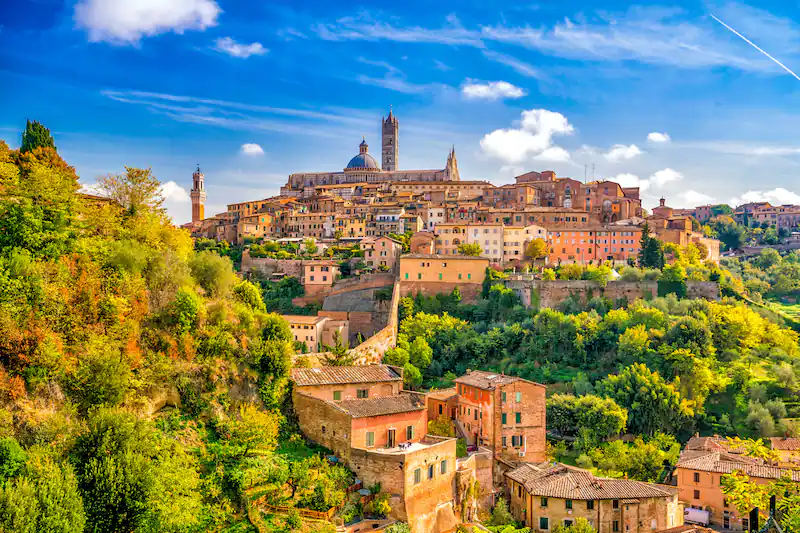Tuscany, the cradle of the Renaissance, is a central Italian area home to several well-known towns and cities emblematic of the nation, including Florence, the capital. The region is home to a gorgeous hillside scenery that makes up over two-thirds of the area, making it the ideal location for a calm getaway in the middle of nature.
It combines vibrant towns and centers of arts and culture, and stunning hillside landscapes. It’s the perfect location for trips to the countryside and has a stunning coastline that overlooks the Mediterranean Sea and stretches across both the Tyrrhenian and the Ligurian Seas.
Tuscany offers a lovely assortment of luxury villa rentals in Italy and is ideal for individuals looking for various experiences and activities since Tuscany has something for everyone. Here are our top recommendations for people who’ve never visited this breathtaking area to make the most of your trip to Italy.
1: Learn Some of the Lingo
English is nearly universal in Tuscany, but learning a few essential Italian words can help you get by. Even though Italians are amiable and kind, knowing a few phrases in their language will be helpful while traveling and exploring.
Although it may be used for both hello and farewell, “ciao” is quite casual. When greeting individuals, “buon giorno” or “buona sera” are preferable and mean “good day” and “good evening,” respectively. “Arrivederci,” is used to bid them farewell.
If you’re mistaken for an Italian, just say “Non capisco,” which means “I don’t understand,” to let them know you don’t understand what they’re saying. If they continue to speak to you in Italian, you can say “non parlo Italiano” to let them know that you don’t speak the language. “Grazie” is used worldwide to express gratitude, meaning “thank you.”
2: Cafes Are Treated Like Bars
Even if there are a few, if you’re used to sitting for hours in a coffee shop, then you could have trouble finding them in Italy. The norm for coffee consumption in the area is to stand at the counter, sip a little coffee, and then go. They’re likely termed bars rather than coffee shops for this reason.
You don’t go to a coffee shop to work as you would in other nations. Instead, you consider going to a bar to drink coffee to be a break from work. There are a lot of classy coffee shops with spacious seating spaces that invite you to take your time, however, not necessarily for professional reasons.
Many of these are “historical cafés,” dating back to when they served as social gathering spots for cultural purposes where many writers, painters, and philosophers congregated to converse and debate their ideas and works.
Small bars are common in smaller towns and often serve as places for people to socialize. However, don’t expect to sit there and work. The availability of Wi-Fi is inconsistent at best, and many establishments don’t provide this service.
3: Lunch is Early – Dinner is Late
Since lunch is often served at noon, arrive promptly for lunch because restaurant kitchens begin to close up at about 2:30 pm. If not, then you’ll waste time searching for a restaurant and only be able to locate pre-made paninis in establishments like pubs. This is OK if you were looking for something similar, but not if you were seeking a restaurant’s more complete menu.
Dinner usually begins about 8 pm on average and frequently lasts until or beyond midnight, with many restaurants and trattoria remaining open until then. You can’t eat much sooner than that because most don’t open until approximately 7 pm unless you go to one of the more expensive restaurants that cater to visitors and are open all day.
4: Tipping Your Servers
While tipping isn’t included in your bill, coperto is included in the cost of your meal. The term “coperto” refers to the service fee for the bread, utensils, and plate. The price for the coperto is often listed at the bottom of page one of the restaurant menu.
If you receive excellent service, then feel free to round up or add a few euros to the total. There’s no specific percentage required for tips. You’re invited to leave a tip for good service, and you may set the amount. If your menu indicates that a tip or coperto isn’t included, you might verify if you’re interested in minimizing expenditures.
5: Wi-Fi Isn’t Always Available
Even though Italy’s Wi-Fi coverage is improving overall due to luxury travel habits, it’s still not guaranteed everywhere. Even when it’s offered, it’s irregular in many places. Always inquire about the quality of the connection if it’s crucial to have it where you’re staying.
In Tuscany, coverage is generally strong in the towns and patchy in the countryside. If you bring your phone and want to utilize the bandwidth to work, then the same is true for the carriers. Nowadays, Wi-Fi is available at many cafés and restaurants, although it’s frequently password-protected so that only paying customers may use it.
The Ideal Time To Visit Tuscany
Tuscany is a bustling center of activity in the summer when scorching heat permeates the area. To avoid crowds at these times, it may be preferable to travel to less popular tourist destinations in the neighborhood. Easter and late Autumn are excellent times of year to travel to Tuscany since the major cities and tourist hotspots are often less crowded.
These would be the finest months if you wanted to view beautiful sunflower fields and shoot some stunning scenery photographs. Winter tends to be some of the quietest months for various cities, making it a fantastic time to explore them if you enjoy the cold.







